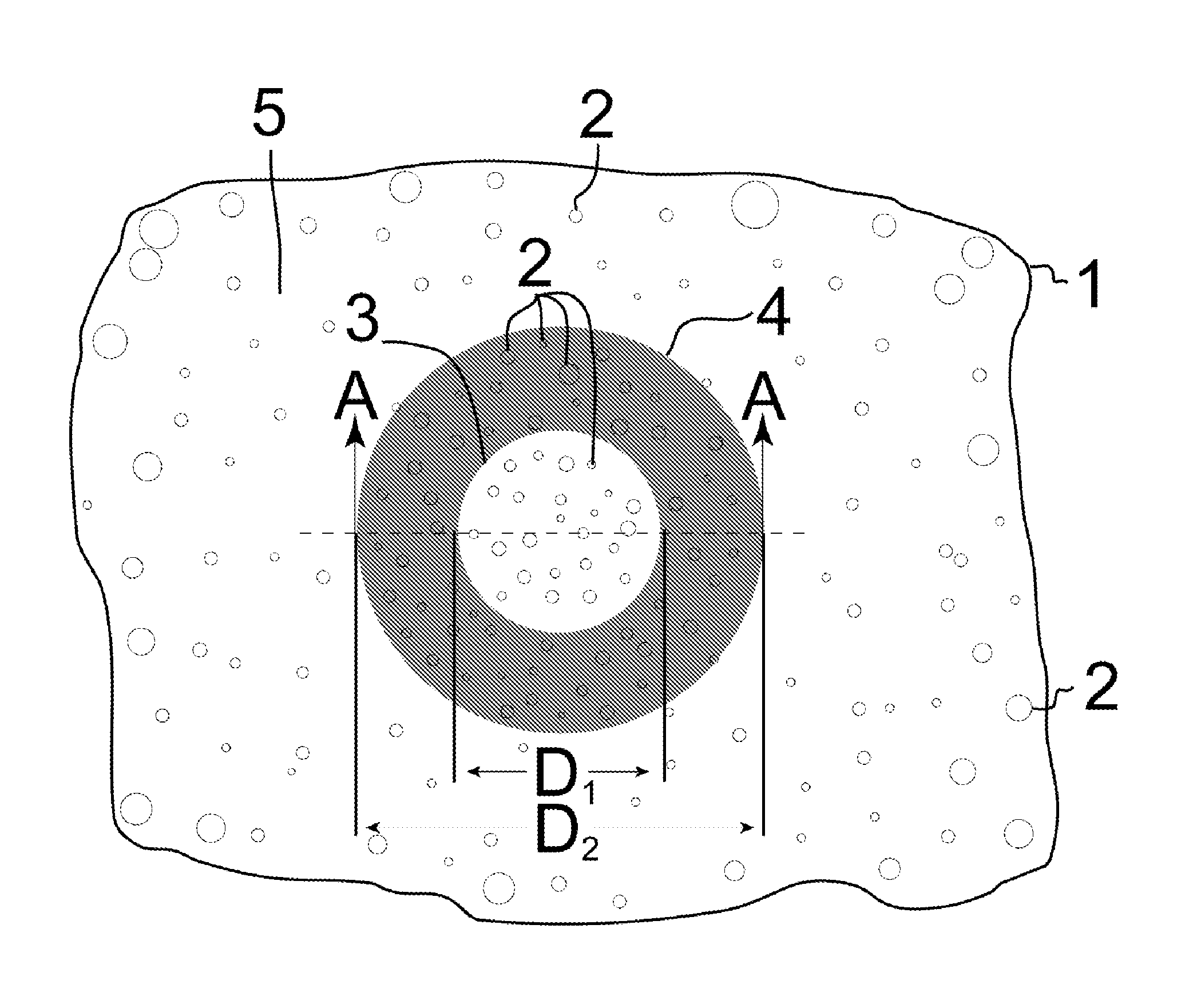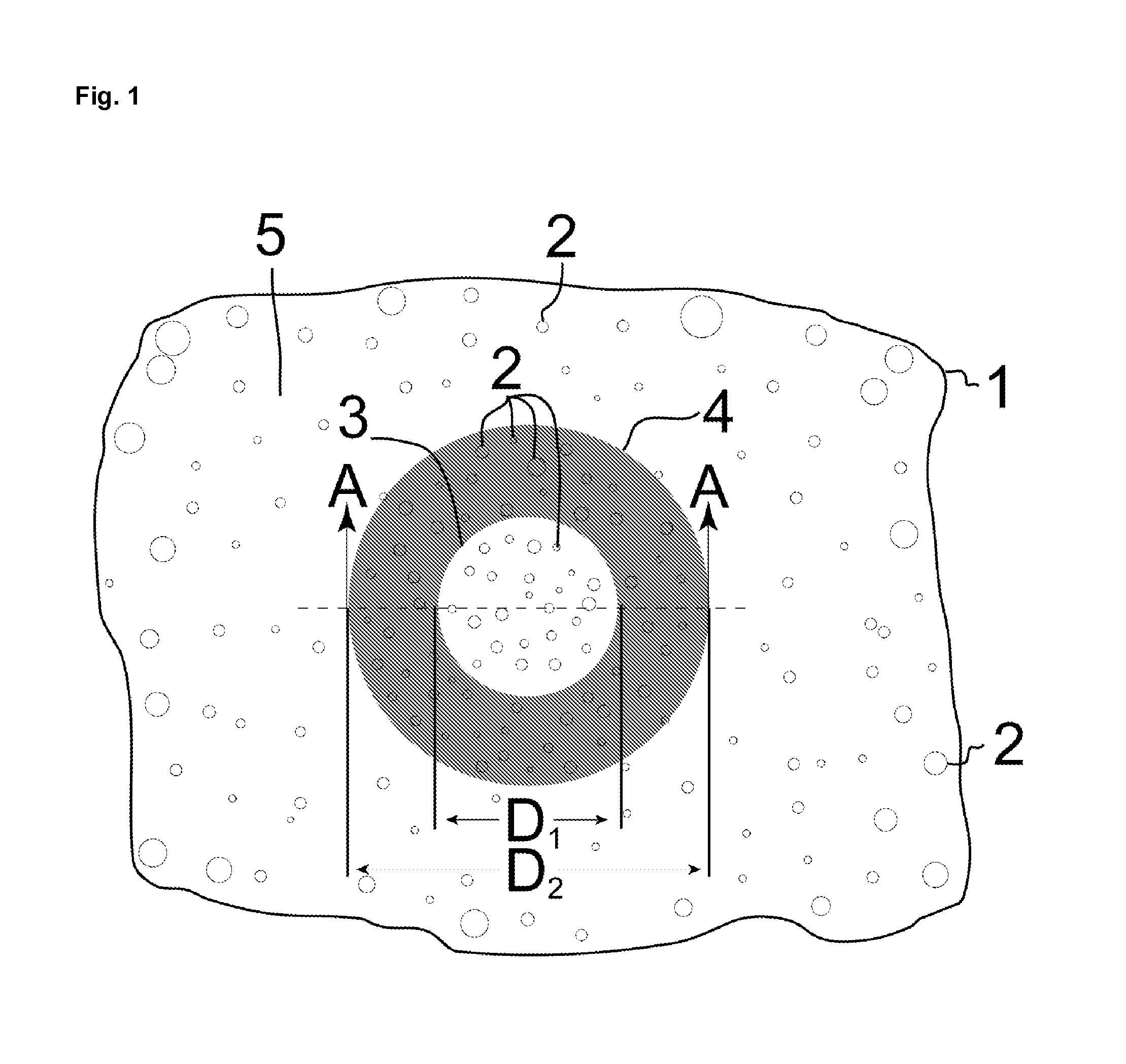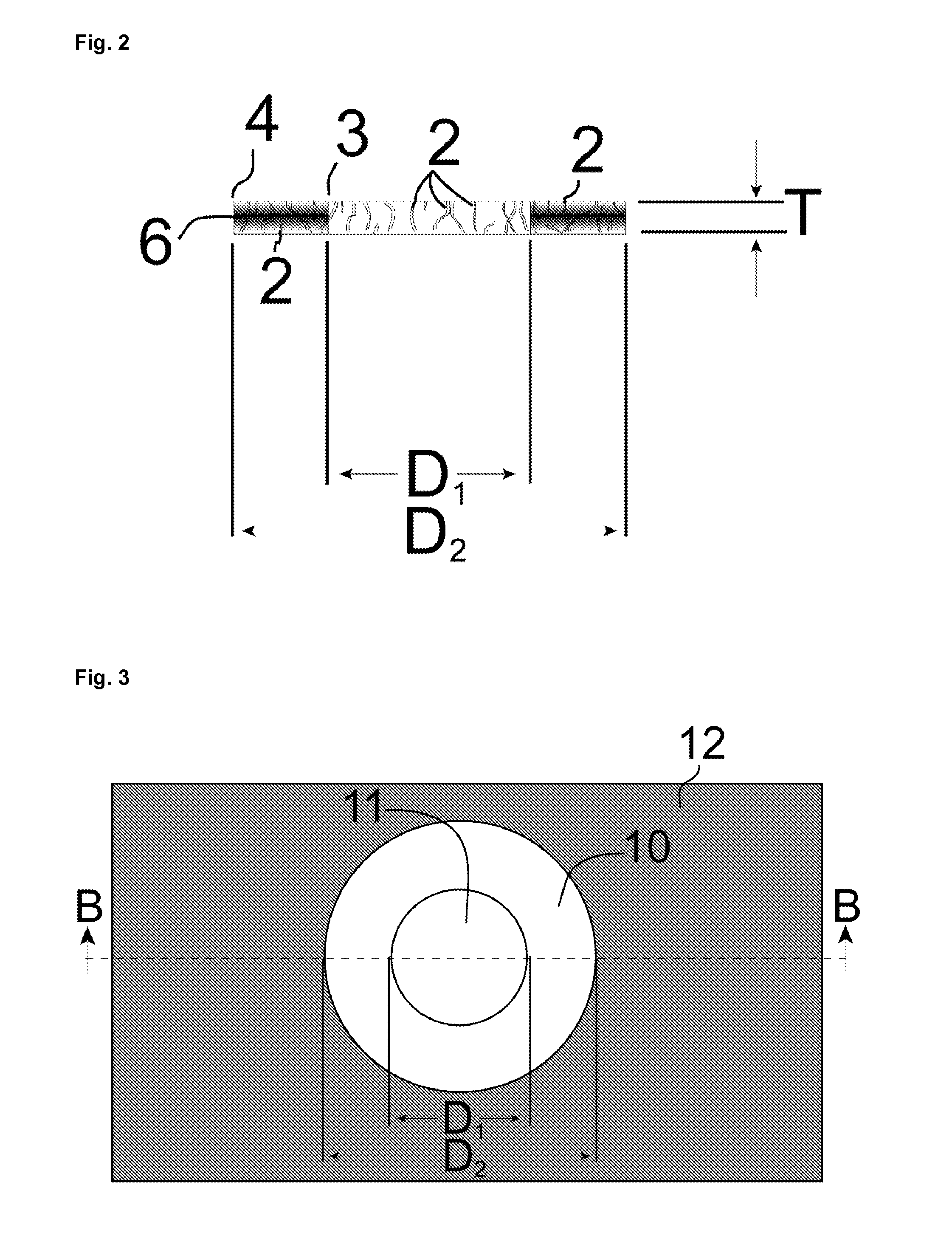Corneal implants produced by irradiation of polymer films
a technology of polymer film and corneal implants, which is applied in the field of ophthalmic devices, can solve the problems of limiting the placement of corneal implants in the cornea, necrosis of corneal tissue,
- Summary
- Abstract
- Description
- Claims
- Application Information
AI Technical Summary
Benefits of technology
Problems solved by technology
Method used
Image
Examples
Embodiment Construction
[0023]The product and process of the invention are now described in detail with reference to the drawings. A single specialized embodiment of the invention can serve to illustrate both the general features common to all embodiments of the invention and the features peculiar to that specialized embodiment. The artificial iris embodiment of the invention is therefore described, which itself has two embodiments. FIGS. 1-2 depict the product of the first embodiment of the artificial iris. FIGS. 3-5 depict process stages in the fabrication of the artificial iris that are common in some form to all embodiments of the corneal implant. FIGS. 6-8 depict process stages specific to the fabrication of the first embodiment of the artificial iris, and FIGS. 9-10 depict the product and specialized process of the second embodiment of the artificial iris.
[0024]The product of the first embodiment of the artificial iris is illustrated from a frontal view in FIG. 1. The artificial iris is in the form o...
PUM
| Property | Measurement | Unit |
|---|---|---|
| Thickness | aaaaa | aaaaa |
| Diameter | aaaaa | aaaaa |
| Flexibility | aaaaa | aaaaa |
Abstract
Description
Claims
Application Information
 Login to View More
Login to View More - R&D
- Intellectual Property
- Life Sciences
- Materials
- Tech Scout
- Unparalleled Data Quality
- Higher Quality Content
- 60% Fewer Hallucinations
Browse by: Latest US Patents, China's latest patents, Technical Efficacy Thesaurus, Application Domain, Technology Topic, Popular Technical Reports.
© 2025 PatSnap. All rights reserved.Legal|Privacy policy|Modern Slavery Act Transparency Statement|Sitemap|About US| Contact US: help@patsnap.com



